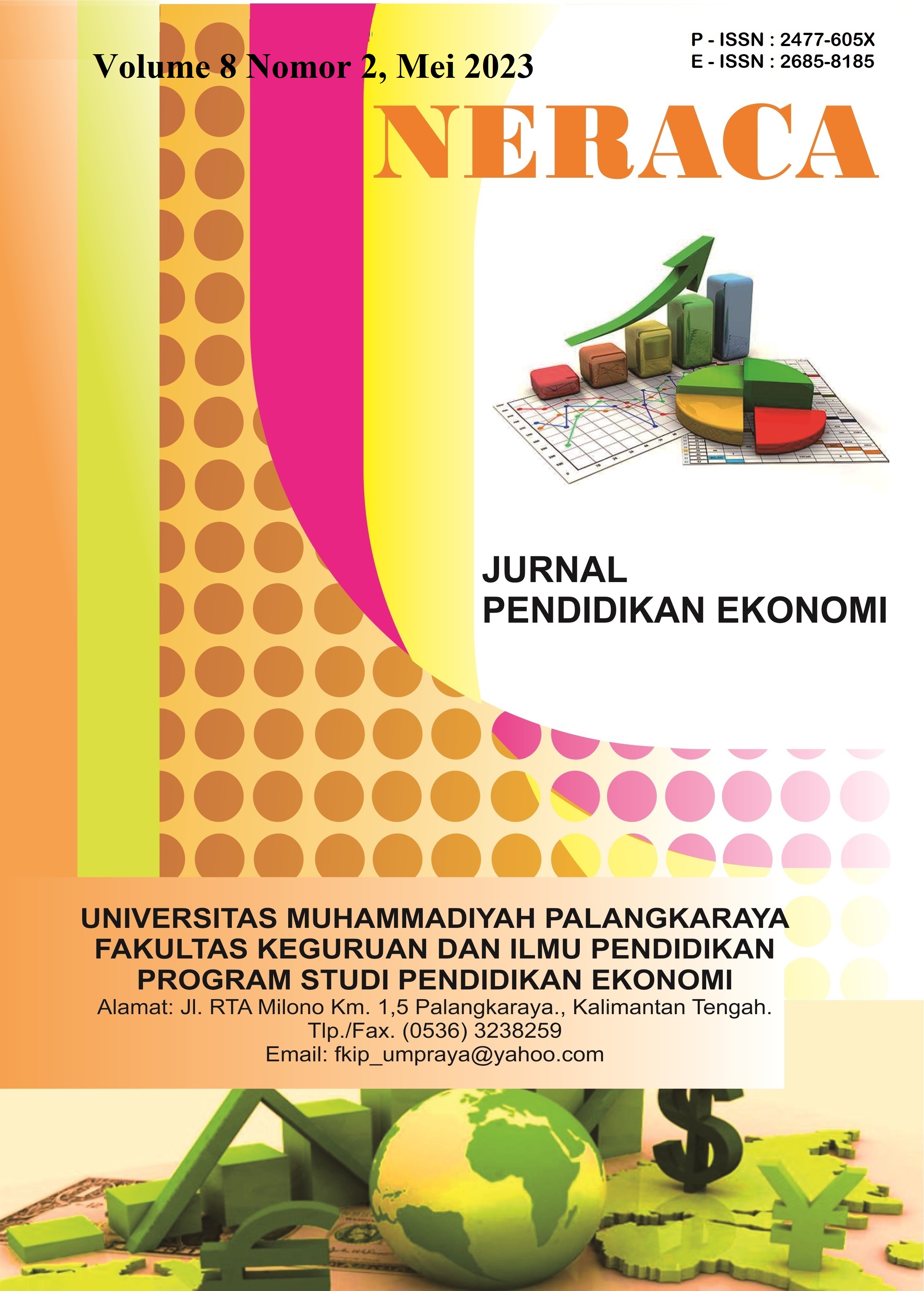Panduan Pengukuran Halal Lifestyle: Pedoman Literasi Keuangan Syariah dan Literasi Halal Halal Lifestyle Measurement Guide: Guidelines for Islamic Financial Literacy and Halal Literacy
Main Article Content
Abstract
All these aspects of life are actually inseparable in the routine activities of a Muslim; that is called the halal lifestyle. The term "halal lifestyle" is yet to be commonly established but is explicitly and implicitly mentioned in the Quran and Hadis as well. Therefore, this paper will proposed the measurement and validity approach for halal lifestyle. The halal lifestyle in foods and beverages will be analyzed and discussed from a halal perspective based on Islamic financial literacy and halal literacy guidance. This study will become a basic reference for measuring the halal lifestyle, which has not been widely discussed by researchers. A total of 108 expert respondents were involved in the research process by completing self-evaluation questionnaires. Islamic financial literacy and halal literacy will be measured using true or false test questions, while the concept of measuring halal lifestyle is carried out using four Likert scales with the choices of strongly disagree, disagree, agree, and strongly agree. Then, confirmatory factor analysis (CFA) will be used to analyze the scoring using SPSS version 21 to test the construct validity. This study is attempted to contribute towards new theoretical knowledge especially in proposing the measurement items for halal lifestyle. This study also has an empirical contribution to understanding the level of literacy among consumers, especially in the halal lifestyle concept.
Downloads
Article Details

This work is licensed under a Creative Commons Attribution-ShareAlike 4.0 International License.
Authors who publish with this journal agree to the following terms:
- Any article on the copyright is retained by the author(s).
- Author grant the journal, right of first publication with the work simultaneously licensed under a Creative Commons Attribution License that allows others to share work with acknowledgment of the work authors and initial publications in this journal.
- Authors are able to enter into a separate, additional contractual arrangements for non-exclusive distribution of published articles of work (eg, post-institutional repository) or publish it in a book, with acknowledgment of its initial publication in this journal.
- Authors are permitted and encouraged to post their work online (e.g., in institutional repositories or on their websites) prior to and during the submission process, as can lead to productive exchanges, as well as earlier and greater citation of published work.
- The article and any associated published material is distributed under the Creative Commons Attribution-ShareAlike 4.0 International License
References
Abdul, M., & Hashim, H. (2009). Consumer decision making process in shopping for halal food in Malaysia *. October.
Abdul, M., Ismail, H., Hashim, H., & Johari, J. (2009). Consumer decision making process in shopping for halal food in Malaysia ∗. 8(9), 40–48.
Ahmad, H., & Ahmad, A. (2016). Establishing Halal Lifestyle Term in Clothing : Guideline and Guidance from Islamic Viewpoint. 01, 7216.
Ahmed, A. (2008). Marketing of halal meat in the United Kingdom Supermarkets versus local shops. 110(7), 655–670. https://doi.org/10.1108/00070700810887149
Ahmed, Z. U., Sam, O., Saiti, A. B., Bin, N., Ahmed, Z. U., & Al-kwifi, O. S. (2014). Consumer behavior dynamics of Chinese minorities. https://doi.org/10.1108/JTMC-10-2013-0038
Antara, P. M., Musa, R., & Hassan, F. (2016). Bridging Islamic Financial Literacy and Halal Literacy: The Way Forward in Halal Ecosystem. Procedia Economics and Finance, 37(16), 196–202. https://doi.org/10.1016/S2212-5671(16)30113-7
Antara, P. M., Musa, R., & Hassan, F. (2020). Theorising attitude towards Islamic financing adoption in an integrative model of behavioural prediction : A proposed conceptual framework. 1(1), 35–41. https://doi.org/10.20474/jabs-1.1.6
Baharuddin, K., & Kassim, N. A. (2015). Understanding the Halal Concept and the Importance of Information on Halal Food Business Needed by Potential Malaysian Entrepreneurs. 5(2), 170–181. https://doi.org/10.6007/IJARBSS/v5-i2/1476
Bergeaud-blackler, F. (2008). Determinants of halal meat consumption in France. https://doi.org/10.1108/0070700710746786
Er, B. (2017). Financial Inclusion and Islamic Finance : A Survey of Islamic Financial Literacy Index. July. https://doi.org/10.25272/j.2149-8407.2017.3.2.02
Ireland, J., & Rajabzadeh, S. A. (2011). UAE consumer concerns about halal products. Journal of Islamic Marketing, 2(3), 274–283. https://doi.org/10.1108/17590831111164796
Lada, S., Harvey Tanakinjal, G., & Amin, H. (2009). Predicting intention to choose halal products using theory of reasoned action. International Journal of Islamic and Middle Eastern Finance and Management, 2(1), 66–76. https://doi.org/10.1108/17538390910946276
Literacy, I. F. (2018). Effectiveness of Education Module Implementation on Increasing Islamic Financial Literacy and Halal Literacy of MSMEs Perpetrators. 10(1), 51–58.
Mara, U. T. (2013). A STUDY ON HALAL FOOD AWARENESS AMONG MUSLIM CUSTOMERS IN KLANG. March, 1073–1087.
Mukhtar, A., Butt, M. M., Mukhtar, A., & Butt, M. M. (2012). religiosity Intention to choose Halal products : the role of religiosity. https://doi.org/10.1108/17590831211232519
Murti, T. W. (n.d.). Halal Life Style And Global Trade. 2, 33–39.
Razak, L. A. (2015). Exploratory Research into Islamic Financial Literacy in Brunei Darussalam. October. https://doi.org/10.13140/RG.2.1.4815.1765
Rezai, G., Mohamed, Z., & Shamsudin, M. N. (2012). in Malaysia Non-Muslim consumers ’ understanding of Halal principles in Malaysia. https://doi.org/10.1108/17590831211206572
Sharma, S. (n.d.). Applied Multivariate Techniques Subhash Sharma.
Teng, P. K., Jamaliah, W., & Jusoh, W. (2013). AWARENESS , RECOGNITION AND INTENTION : INSIGHTS FROM A NON- MUSLIM CONSUMER SURVEY REGARDING HALAL LABELED FOOD PRODUCTS. January. https://doi.org/10.13140/2.1.2822.8168

